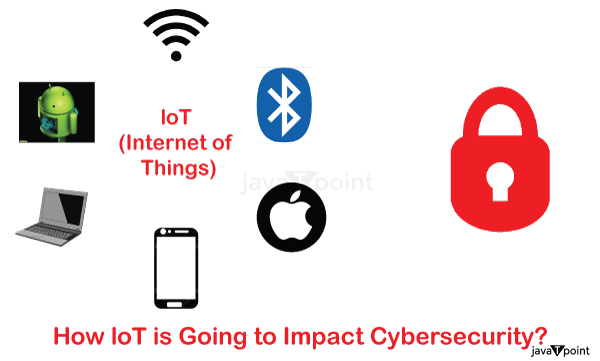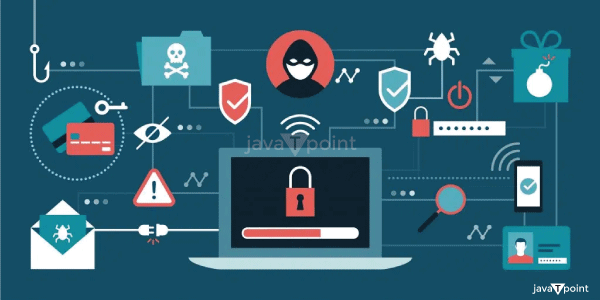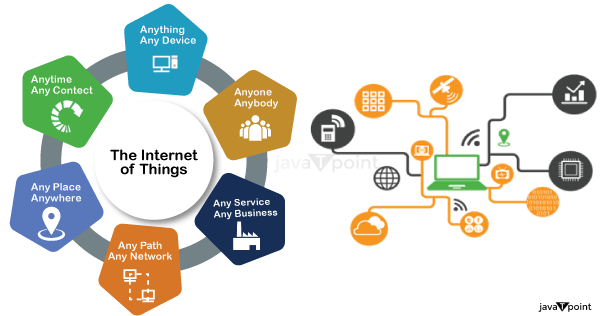Impact of IOT on Cyber SecurityCustomers and organisations throughout the world are adapting to the concept that critical data collecting, analysis, and processing is increasingly taking place at the boundaries of technology infrastructure. This expansion is mostly caused by the Internet of Things (IoT), approximately 64 billion devices expected to be connected to the IoT globally by 2026. According to Business Insider, nearly $15 trillion will be devoted to IoT devices, services, and infrastructure. Asset administration and fitness tracking are two examples of IoT applications, as are smart homes and smart cities. By the end of the year, there will most certainly be two to six connected Internet of Things ( IoT ) equipment for every person living, far outnumbering the number of cell phones, desktop computers, and tablets combined. 
IoT (the Internet of Things) has the potential to significantly alter work and daily lives. Simply described, the Web of Things, or IoT, is the meeting point of the physical and digital realms, where devices of all sizes and shapes leverage connection to provide effortless interactions to customers as well as companies. Nonetheless, the Internet of Things is nearing a tipping point. Will it continue to provide intermittent value inside compartmentalised clusters, or will it release massive potential as a fully connected IoT ecosystem? The transition to a fully linked Internet of Things, or IoT, network between and across business sectors will "unlock" it, determining the answer to that query. What exactly is IOT?The Internet of Things, also known as IoT, is a network of interconnected gadgets that interact with one another as well as with the internet. This might encompass everything from thermostats to security cameras in the house to industrial machinery and cars. IoT has the ability to transform companies and improve our lives, but it also introduces new security problems. Cyberattacks are becoming increasingly common as more gadgets connect to the internet. Hackers can take advantage of weaknesses in IoT devices to get access to sensitive data, steal personal information, and disrupt operations. This is why it's critical to recognise the risks and take precautions to safeguard both your information and your devices. Cyber danger in the Internet of ThingsWhat separates Internet of Things, from a regular Internet? To start with, there are people. The Internet of Things does not require human intervention to function. Sensors accumulate, communicate, analyse, as well as react to information with the Internet of Things, creating fresh possibilities for enterprises in the information technology, media, and telecommunications sectors to add worth, whether or not by developing entirely new ventures and places of income or by providing customers with a more effective experience. However, this raises the possibility that all all that data could be compromised. Because of the Internet of Things, not only are more people sharing larger amounts of data, but also data that is more valuable. As a result, the risks are greatly increased. 
Consider the smart home as an example. Consider a garage door opener that can also switch off the dwelling's alarm when someone enters. This function is beneficial for a homeowner who needs to get into their house fast. However, if just one of the openers for the garage is hacked, the entire safety system might conceivably be switched off. The wide range of connected home appliances-for example, televisions, thermostats, locks, notifications, home automation hubs, and garage door openers-provides hackers with a plethora of avenues through which they may hack into IoT ecological networks, access information about consumers, and even infiltrate manufacturers' systems on the back end. Many technology, media, and telecommunications companies are already concerned about cyber danger.
Common IoT Vertical MarketsCompanies has identified some important businesses and market groups that are succeeding at IoT utilisation to demonstrate how vast the IoT ecosystem has become. The expanding number of use cases demonstrates not just the breadth of IoT's influence on society, but also the amount of access points available to hackers and cybercriminals. The following are on the list: 
Improve the security of IoTThe 80/20 rule appears to apply to cybersecurity, as it does to many other areas of life. With only 20% of the work, one may accomplish 80% of the required protection. Here are four easy measures to boost the security of your connected devices:
IoT Cybersecurity Breach ExamplesThere are several cases demonstrating how prevalent IoT security vulnerabilities are. Many appear almost too unbelievable to be real, yet they are! Consider two instances from CISO Magazine. The first demonstrated how hackers stole people's identities and financial information by gaining remote control to a coffee machine. Smart espresso makers let users to remotely operate them with their cellphones, including issuing voice instructions via Amazon Alexa which can be exploited. Coffee machines aren't built for security, but they do give an easy attack vector for accessing linked devices. A second example is network printers that are linked together. According to the research firm Quocirca, 60% of firms in the United Kingdom, the United States, France, and Germany had a printing network information breach in 2019, costing organisations an average of over USD 400,000. Hackers utilise printers, which are typically poorly protected, as an entry point into the network or can even be enlisted as members of botnets used to launch DDOS assaults within the organisation. Closing the GapTo guard against security issues and attacks, IT professionals must establish an end-to-end cybersecurity strategy and discover IoT risks before any sensitive information is compromised. According to the Ponemon Institute, 52% of respondents believe their organisations are at a disadvantage in reacting to risks because they utilise manual methods. Organisations should use learning algorithms and other artificial intelligence (AI) technologies to discover current vulnerabilities and increase alerting performance in real time in order to address this issue. Cybersecurity and IoT in the FutureThe convergence between cybersecurity & IoT is going to grow increasingly important as IoT evolves and expands. A proactive & holistic approach to cybersecurity in IoT is the way of the future. Stakeholders in the industry, manufacturers, and legislators must work together to develop strong security standards, encourage safe design and coding practises, and build a culture of constant monitoring and reaction. Furthermore, dealing with an attack's surface impact necessitates continual study and innovation. IoT-specific safety features, such as compact encryption algorithms, resource-efficient authenticating processes, and intrusion detection systems optimised for IoT contexts, will be critical in securing these devices. ConclusionThe convergence of cybersecurity with IoT needs a thorough knowledge of the attack surface's impact. The dangers and weaknesses associated with IoT devices develop as the attack surface extends due to an increasing number as well as diversity of IoT devices. Organisations may limit these risks and reduce the attack surface by using proactive cybersecurity solutions such as safe design rules, segmentation of networks, and a defence in depth strategy. The future of cybersecurity and the Internet of Things is in a collaborative effort to set industry-wide security standards, encourage secure development practises, and responsibly exploit emerging technology. We can secure the safety and reliability of IoT gadgets and exploit their potential for creativity, connection, and efficiency while defending against changing cyber threats by regularly addressing the effect of the attack surface.
Next Topic#
|
 For Videos Join Our Youtube Channel: Join Now
For Videos Join Our Youtube Channel: Join Now
Feedback
- Send your Feedback to [email protected]
Help Others, Please Share










